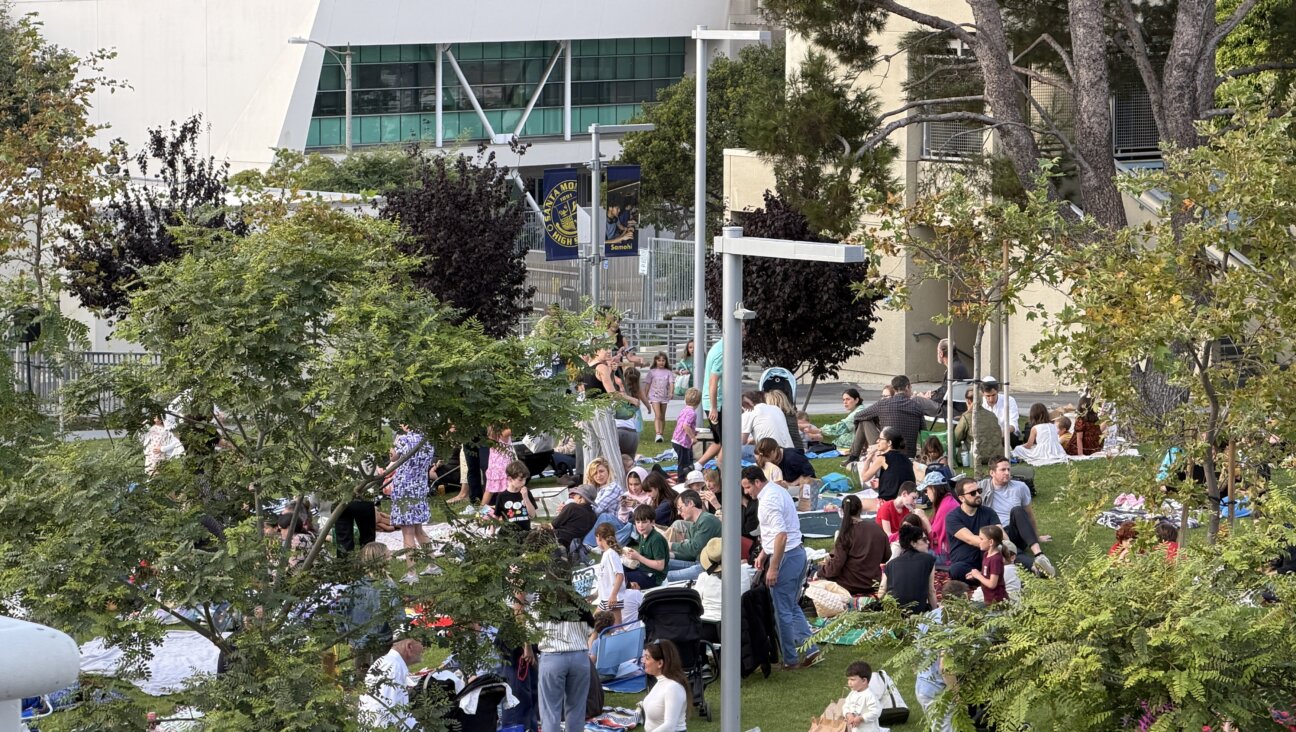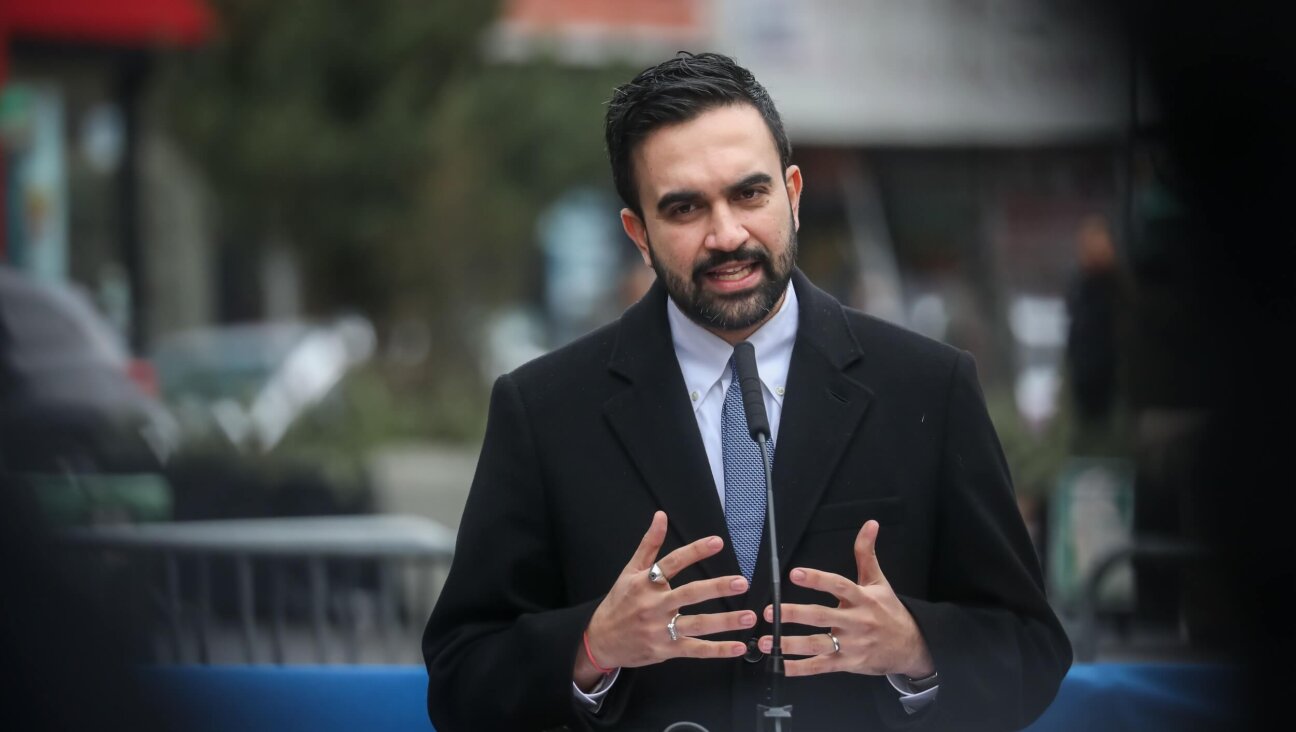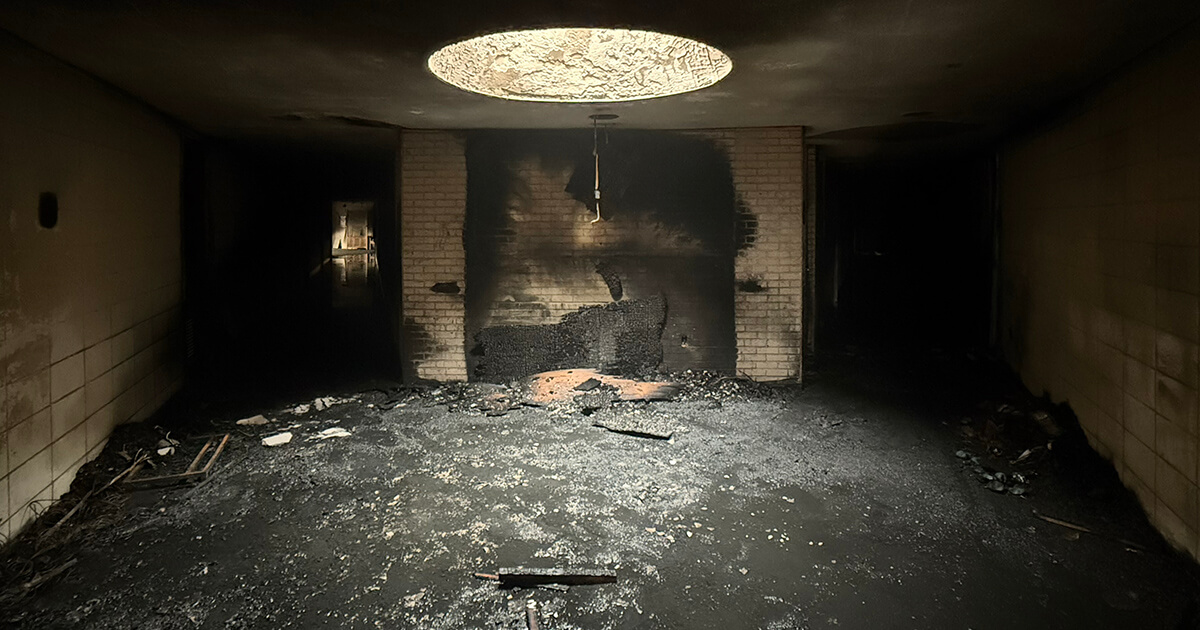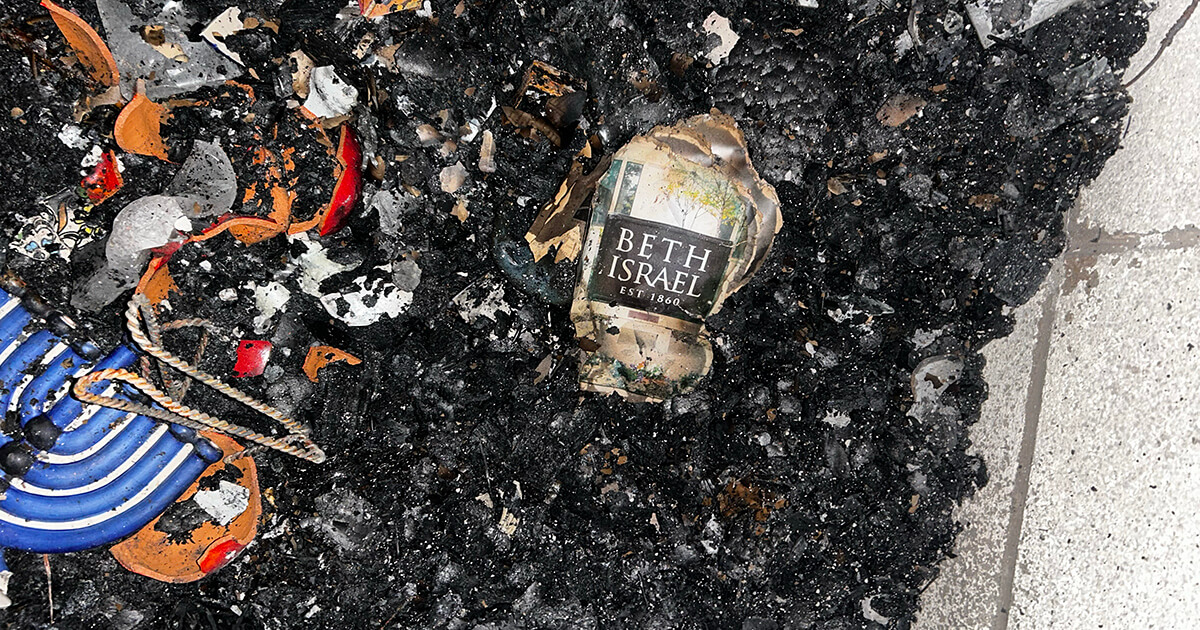Sex, Molotov Cocktails and a Roof That Doesn’t Leak in Jerusalem’s Restive Mixed Neighborhood

Neighborhood Clashes: Palestinian youths battle Israeli police in the Jerusalem neighborhood of Abu Tor, to which correspondent Naomi Zeveloff just moved. Image by getty images
I was sitting at my desk, trying to write. But all I could focus on were the sounds outside my apartment: a helicopter’s propeller whirred against a steady percussion of Molotov cocktails, fireworks and stun grenades, all punctuated by the occasional wail of sirens.
I was on deadline for an article about the closure of the Temple Mount — or the Haram al-Sharif, as Muslims know it — which Israel had announced that same day, October 30. But I could hear another news story developing blocks away, where Palestinians were clashing with Israeli police near the home of Moataz Hejazi, a 32-year-old Palestinian shot dead by Israeli forces hours earlier.
Hejazi was suspected of shooting and gravely wounding Yehuda Glick, a right-wing Israeli activist who advocates building a Third Temple for Jews on the site where the Dome of the Rock and the al-Aqsa Mosque now sit. The site, administered by Muslim religious authorities for centuries, is regarded as holy by Jews, Christians and Muslims.
I followed my neighborhood updates on Twitter: The BBC’s Quentin Sommerville posted real-time photographs of police in full riot gear, the flare of Palestinian fireworks in the background. The clamor continued for hours, petering out at about 11 p.m. Then, silence.
And then, a new sound: the unmistakable rhythmic creak of bed springs. My upstairs neighbor, a German aid worker, was having sex with his girlfriend.
Abu Tor is, in so many ways, a very close-knit neighborhood. But in other ways, it is just the opposite.
I moved to Abu Tor when I came to Jerusalem from New York in August for my first overseas assignment as the Forward’s Middle East correspondent. I had read about Abu Tor on Wikipedia, which describes the neighborhood as a mixed Arab and Jewish area south of the Old City. It sounded like the perfect place to position myself to write about both peoples. I found my apartment through Maya, a friend of a friend who used to live in the unit.

Welcome to the Neighborhood: Forward correspondent Naomi Zeveloff in Abu Tor, Jerusalem. Image by Tova Scherr
On the day that I moved in, Maya accompanied me to the apartment, opening the gate to the building’s garden, where my new Israeli landlady was sitting at a plastic table with her Palestinian handyman. My landlady, who is 74, is a lifelong Jerusalemite. She commissioned the apartment building with her husband 18 years ago. Now divorced, she lives on the third floor. On the day I met her she wore dark sunglasses and waved a cigarette with a plastic filter. “I hope you’ll be very happy here,” she said.
After I signed the lease, Maya took me to a lookout point in the neighborhood, near a Greek monastery. She pointed out the Old City to the north, the Dome of the Rock gleaming in the sun, and then moved her finger south, tracing the concrete wall in the distance. Israel’s security barrier was meant to deter West Bank suicide bombers, but it also cut Palestinian farmers from their land.
We walked through brush to the eastern edge of the lookout. Below were Palestinian homes, identifiable by black rooftop water tanks — water is a scarce resource in Palestinian areas. Though Maya and her husband lived in Abu Tor for three years, they had ventured down there only once, to buy bread during Passover. The visit was brief because they felt so uncomfortable. It was then that I realized that Abu Tor wasn’t mixed, but divided: Jews on one side and Palestinians on the other.
It is often said that Jerusalem is a city of contrasting forces — secular and religious, Jew and Muslim, rich and poor — but no area captures the dichotomies quite so dramatically as my neighborhood. Abu Tor, which means Father of the Bull, is named for a bull-riding officer in the army of Saladin, the sultan who fought against crusaders in the Levant in the 12th century. After the 1948 war, Abu Tor was bisected by the Armistice line separating Israel from Jordan, marked by a string of barbed wire.
In 1967 the neighborhood was a crucial outpost for Israeli soldiers when they captured the Old City, an event memorialized in Hebrew on a wooden plaque on Abu Tor’s Naomi Street. Israel annexed the Palestinian half of Abu Tor after 1967, along with the rest of East Jerusalem, but the international community considers it occupied territory.
Jewish Abu Tor, where I live, is made up of stately stone apartment buildings, each one announcing its owner and street number with a decorative enamel plaque. United Nations and European Union vehicles flit down the winding streets, cats meander among the pines and bougainvillea, and Hasidic men slide on Segways on the nearby Sherover Promenade.
Palestinian Abu Tor, on the other hand, is a picture of municipal neglect. A 2013 report by Bimkom, an Israeli not-for-profit planning organization, describes the neighborhood’s road network as being in a “state of collapse,” which prohibits homes from connecting to the municipal water system. Trash cans overflow, and schools and homes are overcrowded.
A handful of Jewish settlers also live in the Palestinian side, their homes marked by Israeli flags. According to the report, Palestinians in Abu Tor have exhausted their allotted building rights in the neighborhood, leading them to construct homes in nonresidential zones. On the day that I wrote this article, Israel knocked down two structures in Abu Tor that it said were built illegally, leaving more than a dozen people homeless.
Inevitably, this geographical divide has yielded a comparable social divide. Despite her lifetime living in the city, for example, my landlady was unaware that her Arab neighbors, like those throughout Jerusalem’s eastern sector, were not citizens but residents, ineligible to vote in national elections.
In the aftermath of Hejazi’s killing, I was told that Palestinian Abu Tor was too tense to venture into on my own — lest my neighbors mistake me for an Israeli spy — so I reached out to Ghaleb Abu Nijmeh to see if he could accompany me. Abu Nijmeh is a retired shoemaker and the elected spokesman for the neighborhood’s eight large Palestinian families. Four days after Hejazi’s death, he picked me up on the corner of Naomi Street. Dressed in a tan suit with a shiny brown tie, he maneuvered his sedan through Abu Tor’s winding streets, past rows of corrugated awnings, convenience stores and a shop called Youtupe Computer Technology.
The walls of the neighborhood were covered in spray paint, maps of Israel and the Palestinian territories filled in with the Palestinian national flag, stenciled pictures of the al-Aqsa Mosque and the occasional swastika. Abu Nijmeh paused in front of a home hung with a red embroidered tapestry of al-Aqsa and a yellow flag with the face of the deceased Palestinian leader Yasser Arafat. This is the beit shahid, he said, or the martyr’s house, where Hejazi had lived.
Abu Nijmeh said that Abu Tor is an “apartheid area.” Yet up until recently the neighborhood was quiet, with Jews and Palestinians keeping to their own sides. The Jerusalem municipality, for its part, has said that it is committed to closing the gap between East and West Jerusalem by investing 500 million shekels into infrastructure projects among other initiatives.
Ripples began forming on Abu Tor’s placid surface a year ago, when Palestinians in the neighborhood began what Abu Nijmeh described as a peaceful protest movement against the increasing Jewish presence at the Al Aqsa compound. Since Hejazi’s death, the Israeli police have gone “harder and harder” into Abu Tor, using rubber bullets, tear gas and skunk water. He said that, for the first time, cars on the streets of Abu Tor are being ticketed and towed for parking violations, a development that he labeled “collective punishment.” (When asked about this, Jerusalem police spokesman Micky Rosenfeld said that there was no change in traffic enforcement in Abu Tor.)
The police crackdown is not limited to Abu Tor. In the two-day weekend that followed the Glick assassination attempt, 17 Palestinians were arrested for “disturbances” in different East Jerusalem neighborhoods. There have been 110 arrests of Palestinians since the late October terror attack at a Jerusalem train station killed a 3-month-old infant.
Abu Nijmeh said that the elderly men in the community had met with the teenage boys to implore them to stop clashing with the police in order to bring security back to Abu Tor. But he explained that the clashes were a way for the boys to say, “I am here.”
“They need the government to know that there are Palestinians here in al-Thuri,” he said, using a local name for the neighborhood. “They have to listen to the needs of the people.”
If there is a comparable figure to Abu Nijmeh on Abu Tor’s Jewish side, it is Israeli-American David Maeir-Epstein. He has been living in Abu Tor for nine years, since he bought a home on Assaell Street, the dividing line between the Jewish and Palestinian sections and the one street where the two populations live together.
Three years ago he was elected as the representative of Abu Tor and North Talpiyot — a nearby West Jerusalem neighborhood — on a Jerusalem community council. Maeir-Epstein, who runs a not-for-profit that helps companies with resource development, said that he and his wife have warm relationships with the Palestinians who live on Assaell.
“A multicultural street didn’t bother me, having come from America,” he said.
In his role as community liaison, Maeir-Epstein said he has chosen “not to recognize the borders in terms of whom I serve and reach out to.” On his email list — which includes some Palestinians — he broadcasts the neighborhood developments that he believes will benefit both populations, from installing speed bumps on Gihon Street, a main thoroughfare that connects the neighborhood to the rest of West Jerusalem, to putting up a fence and two benches in an abandoned lot in order to beautify a soccer field in the western part of the neighborhood, used mostly by Palestinian boys.
Yet, he said, “in parallel with all this wonderful idyllic coexistence project, there are larger forces at work.” Over the past year and a half, Jews’s homes have been vandalized, their cars have been torched and broken into and Palestinians’ tires have been slashed. Maeir-Epstein is convinced that the perpetrators on both sides come from outside the neighborhood.
He says recent events in Abu Tor do not represent a new normal. The clashes after Hejazi’s death were “more or less or contained by the police to the lower elements of Arab Abu Tor,” he said. “Our street and the streets right next to us have been totally quiet, and our relations with our neighbors have been totally normal.”
As I write this, the sound of stun grenades rings out again in my neighborhood. Yet if there’s one Abu Tor resident who is not worried about the violence, it’s my landlady. The morning after Hejazi’s killing, she knocked on my door wearing a bathrobe. I rushed outside in my pajamas, convinced that she had come to check on me in the wake of the neighborhood cacophony.
But no, she just wanted to know whether my ceiling had sprung a leak in the Jerusalem rain.
Contact Naomi Zeveloff at [email protected] or on Twitter, @naomizeveloff

















